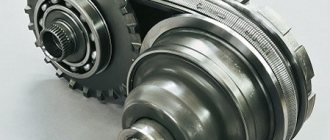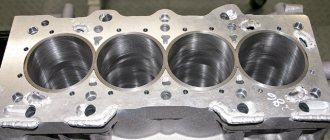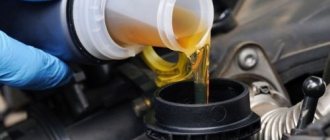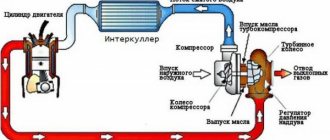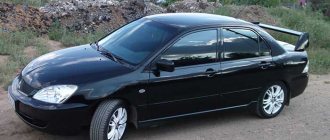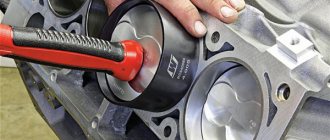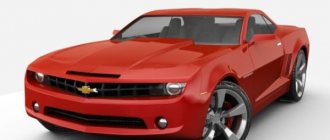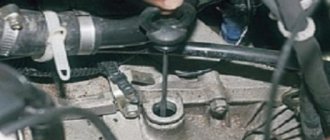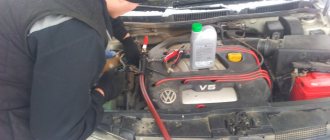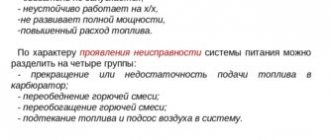G4KD/G4KE and 4B11/4B12 are designed and built jointly under the auspices of GEMA.
GEMA is an alliance created by three automakers: Hyundai, Mitsubishi and Chrysler. It was formed in 2002 on the basis of five factories, and the reason was the development of a reliable “World Engine”.
But in fact, the reason is more banal - unification and cost savings. Nowadays, modular platforms and identical engines are not something surprising.
Already, the turbocharged 1.33 TCe is installed on both the budget Renault Arkana and Mercedes-Benz A and B classes. But in 2002, it was planned to equip 20 models of different manufacturers with the “World Engine” from Peugeot to Mitsubishi, producing up to 2,000,000 engines per year.
Motor project G4KD/G4KE and 4B11/4B12
Hyundai engineers were responsible for the design of the cylinder block and cylinder head, and Mitsubishi specialists were responsible for the intake and valve timing control system.
The engine turned out to be a 4-cylinder, long-stroke, with an aluminum block and an aluminum cylinder head, has two phase shifters and a chain drive. This series does not have hydraulic compensators, so it is worth periodically adjusting the thermal clearances.
Based on these engines, Mitsubishi released its series of units - 4B11 (2.0 l.) and 4B12 (2.4 l.), as well as a turbocharged two-liter version - 4B11T for the Mitsubishi Lancer Evolution X. The engines have proven to be excellent for Mitsubishi and Chrysler owners, as opposed to KIA and Hyundai owners.
4B11T for Mitsubishi Lancer Evolution X
In the Korean version, the engines turned out to be less durable; both the quality of the components and the improvements made by Korean engineers had an impact. The most unsuccessful engine was the Korean G4KD with a volume of two liters.
4B11
G4KD
The crankshaft has lost its counterweights. The result: decreased lubrication of the working surface of the cylinder walls and the appearance of scoring. For the next version of the engines - G4NA, already with hydraulic compensators, similar complaints related to scuffing arose.
Badasses in G4KD
In 2020, the G4NA unit acquired oil nozzles, which should have a positive effect on the lubrication and cooling of working surfaces.
It is worth noting that the main drawback of the G4KE (2.4 liters) is the rotation of the crankshaft liners, which was corrected only in 2020. The reason is simple – the quality of the materials used. The problem affected up to 2% of cars produced.
Rotating the liners
Capital or scrap?
A 1.4 engine with a manual transmission should consume no more than 7.6 liters per hundred in the city. Is it so?
Engine 1.6 liter Gamma series.
Engines manufactured in China were mainly supplied to Russia.
Everyone who produces cars is interested in selling them as much as possible and as expensive as possible, with minimal investment. The Hyundai company is no exception, especially for the budget Solaris. The design of the car contains many fairly cheap solutions, inexpensive materials and technologies . This also applies to the engine.
Official opinion
Officially, Hyundai gives a warranty on the engine without attachments for one hundred thousand miles or about 180 thousand km, which is approximately five years of operation. Of course, it’s far from a fact that the engine will fall apart at the 181st thousand, because we know people who drive Solaris for 250-300 thousand, but there is one factor that no one can avoid.
Solaris are equipped with a Gamma G4FA with a volume of 1400 cc or a G4FG-G4FC with a volume of 1.6 liters .
A distinctive feature of engines developed in the early 2000s is the widespread use of aluminum, in particular, the use of this metal for the manufacture of the foundation of any engine - the cylinder block.
Engine Gamma G4FC.
On the one hand, aluminum is much lighter than cast iron, which is practically no longer used for building blocks, and it has excellent thermal conductivity. On the other hand, aluminum is very ductile and less wear-resistant than cast iron . This is precisely what casts doubt on the possibility of carrying out a major overhaul, which will be relevant for a mileage of under 200 thousand km.
Which machines have GEMA engines installed (G4KD/G4KE and 4B11/4B12)
The series of engines turned out to be surprisingly successful; the engines installed in the Mitsubishi model do not have critical problems, but repairing such engines is quite expensive. The cost of original components for Mitsubishi is several times higher than for Hyundai\Kia.
- Mitsubishi : Outlander, Lancer, Galant, Delica, ASX;
- Hyundai : Sonata, Santa Fe, Tucson (ix35);
- Kia : Sorento, Sportage, Optima, Cerato;
- Chrysler : Sebring, 200;
- Dodge : Journey, Caliber, Avenger;
- Jeep : Patriot, Compass;
- Peugeot: 4007;
- Citroen : C-Crosser.
The G4KD/G4KE and 4B11/4B12 series, although with shortcomings, are a good mass solution, and when executed by Mitsubishi they do not raise serious complaints at all.
Why you should sign up for repairs at Men's Motors:
1. The dealer offers to replace the complete motor or short block with repair - from 300,000, we offer repairs that are several times cheaper!
2. Replacing with a counter-attack is a real shame. Our repairs are guaranteed for 2 years!
3. In third-party services it is not clear what is being done and how. We offer control of work at any stage .
Sign up now - save time and money! Every extra day of driving with knocking noises comes with MORE expensive repairs.
Owner reviews
- Denis. Kia Sportage 2.0 petrol, 1996, 385,000 km. I purchased this car in 2013. The main disadvantage, of course, is age. First of all, something that rots badly. If you buy such a car, choose very carefully. High ground clearance entails rolliness in corners. In the city the engine is sufficient, but on the highway you can already feel the lack of power when overtaking. And after 100 km/h, the ride becomes not very comfortable. Despite its advanced age, the car has decent equipment. There is everything for comfortable use. And of course, the car fully demonstrates all its trump cards off-road. Here he has few equals. For this amount of money you will not find anything similar in terms of capabilities.
- Alexander. Kia Sportage 2.0 petrol, 2001, 265,000 km. A good car option for all occasions. Due to the presence of the frame, it is generally indestructible. All the load goes to her. Personally, a two-liter engine is enough for me even on the highway. It didn’t cause me much trouble, but I was used to looking after the car and servicing it on time. Of course, age has an effect. Problems pop up here and there. But technology tends to break down, and this can be solved. The chassis is excellent. You feel very confident on our “chic” roads. You drive and drive without worrying about the quality of the surface. Thanks to its small size, I don’t experience any problems in the city. It's like I'm parking in a car. At the same time, it shows itself in all its glory off-road. Connectable all-wheel drive, low gear - according to the set of equipment, a full-fledged jeep. And given the short wheelbase, the geometric cross-country ability is beyond praise. I advise you to buy it for those who often drive on bad roads or over rough terrain. It won’t let you down even when going off-road. The main thing is not to run into a dead specimen.
- Vitaly. Kia Sportage 2.0 petrol, 2008 76,000 km. I owned this car for five years. Bought new from the showroom. In all this time I have never let you down. I liked it mainly because of the comfort in the cabin. Comfortable seats, climate, spacious interior - all this captivated me. I wasn't very happy with the suspension. It is somewhat noisy and shakes a lot on uneven surfaces. Otherwise, there were no questions about driving performance. It was quite easy to drive, and you can’t say it’s an SUV. I felt confident on the track. But the engine power was just enough at critical moments. When overtaking, it was necessary to carefully calculate everything in advance and turn the engine. Yes, and it is a little noisy in the cabin during dynamic driving from the engine. Since the car is front-wheel drive, I didn’t get into heavy mud. But the car performed well on muddy primers. Good geometric cross-country ability made it possible to drive calmly. I was a little upset by the consumption, which was much higher than stated by the manufacturer. And it’s a very harmonious car, I think it’s worth the money.
- Igor. Kia Sportage 2.0 diesel, 2006, 52,000 km. Purchased new from a dealership. I owned it for three years. Drove a little over fifty thousand. When I was choosing, I looked at all the competitors. But somehow my soul was drawn to him. I had my doubts about whether to take a diesel engine, but decided to go anyway. During my use there were no problems with it at all. Even in winter it always started up confidently. At the same time, he always made me happy with the amounts in the receipts when refueling. It worked out very economically. Investments include only consumables and some work on the suspension. But I didn’t travel very far. I heard that the further you go, the more problems there are with diesel engines. Therefore, as soon as the opportunity arose I decided to sell. To sum it up, the car is not bad. Of course there are no frills in it, everything is simple. But at the same time, everything works, everything is functional. All the necessary options are present. Spacious, economical, roomy. A good option for a family.
- Nikolai. Kia Sportage 2.0 petrol, 2012 75,000 km. From a driver's point of view, I am completely satisfied with the car. Stylish appearance, comfort, handling - everything is at a high level. But there are nuances. I specifically chose the version with a naturally aspirated two-liter gasoline engine. This was done for reasons that the unit was proven and reliable. But it turned out that this is not entirely true. It all started with knocking and vibrations around 40 thousand. When undergoing maintenance at the officials, I informed the foreman. But he claimed that this was such a feature. I didn’t believe it and went to another station. They also shrugged it off and referred to it as a peculiarity. I forgot about it for a while, but around 60 thousand km I still found a meticulous technician who went so far as to remove the cylinder head. It turned out that the second, third and fourth cylinders were bad. After browsing the forums, I realized that this problem is widespread. It turns out that the resource of this engine is very modest. Moreover, it is manufactured under license from Mitsubishi. But this is not the case on their models. It turns out the Koreans screwed something up.
- Maksim. Kia Sportage 2.0 petrol, 2013, 66,000 km. I wanted to share my impressions of ownership. Among the first positive impressions of the car (in addition to the design and equipment) were excellent brakes and good sound insulation. The engine can only be heard at high speeds. The rest of the noise comes only from the wheel arches. I am pleased with the car's easy-going behavior and decent handling. But the suspension only pleases on small bumps. It’s already a bit difficult for her on larger ones. Probably, its short stroke affects it. The work of the six-speed automatic transmission and the two-liter engine seems to me to be very balanced. The dynamics are not hurricane, but you can’t call it a vegetable car either. In the cabin, I like the materials and the ease of seating, but the visibility is so-so. The wide counters and unique shape of the mirrors take some getting used to. In general, everything is very poorly visible back. But this is not uncommon on modern cars. The car hasn't caused any problems the entire time. I underwent maintenance in a timely manner and simply closely monitored the condition. So far only positive emotions from the car.
- Sergey. Kia Sportage 1.6 GDI petrol, 2020, 14,000. I bought the car for reasons of economy. This concerned both the calculation for low fuel consumption and the price of the car itself. Everything was explained by a New Year's promotion with good discounts. In a sense, the purchase turned out to be spontaneous. My assumptions were correct. The engine's appetite is really modest. And the dynamics are quite acceptable. Of course, this is not a sports car, but I feel fine in city traffic and on the highway as well. What else to say. A good modern car at a reasonable price.
- Novel. Kia Sportage 2.0 petrol, 2020, 16,000 km. I own the version with a naturally aspirated two-liter engine with an automatic transmission. I chose exactly the configuration in which I would use all the options. Therefore, I settled on front-wheel drive. I don’t go off-road seriously, but in the city in winter the combination of good tires and high ground clearance is quite enough. The engine was chosen consciously. Precisely an atmospheric two-liter. I think this is the best option for this car. The motor has been on the production line for a long time, all its features are known. During operation I am satisfied with it. My verdict is an ordinary motor with good performance. I can say that all expectations about the car were met.
Characteristics
| Production | Hyundai Motor Manufacturing Alabama (HMMA) Shandong plant Hwaseong plant |
| Engine make | G4KD |
| Years of manufacture | 2008-2014 |
| Cylinder block material | aluminum |
| Supply system | injector |
| Type | in-line |
| Number of cylinders | 4 |
| Valves per cylinder | 4 |
| Piston stroke, mm | 86 |
| Cylinder diameter, mm | 86 |
| Compression ratio | 10.5 |
| Engine capacity, cc | 1998 |
| Engine power, hp/rpm | 150/6200 156/6000 165/6200 |
| Torque, Nm/rpm | 191/4700 194/4300 198/4600 |
| Fuel | 95+ |
| Environmental standards | Euro 4 Euro 5 |
| Engine weight, kg | 136 |
| Fuel consumption, l/100 km (for Kia Sportage) - city - highway - mixed. | 11.26.9 8.5 |
| Oil consumption, g/1000 km | up to 600 |
| Engine oil | 5W-20 5W-30 |
| How much oil is in the engine, l | 4.1 |
| Oil change carried out, km | 15000 (better 7500) |
| Engine operating temperature, degrees. | ~90 |
| Engine life, thousand km - according to the plant - in practice | — 100-150 |
| Tuning, hp — potential — without loss of resource | 165+ 165 |
| The engine was installed | Hyundai ElantraHyundai ix35 Hyundai Sonata Kia Cerato/Forte Kia Optima Kia Sportage Hyundai i30 Hyundai Creta Hyundai Tucson Hyundai Veloster Hyundai Venue KIA Soul KIA Rio X-Line |
Engines and gearboxes from Korea - KorMotor|Engines|G4KD Engine
Manufacturer:
Hyundai/Kia motors
Cars: Sonata, IX35 / Carens, Magentis Condition:
Contract, no mileage in the Russian Federation
The gasoline internal combustion engine of the G4KD model has the following characteristics: a four-stroke power unit with a volume of 2.0 liters, using light liquid fuel for operation - gasoline (rec. AI 95). Here, the internal formation of a combustible mixture is used, which is ignited forcibly from an electric spark.
The G4KD motor belongs to high-speed automobile engines, capable of producing from 150-165 hp with a declared resource from the factory of 250 t.km. It is the result of the work of engineers and developers of Hyundai / Kia motors and is successfully used in car models of both companies.
According to automotive Internet sources, it has been installed since 2009 (not verified information).
Engine IX35
The Hyundai IX35 is the successor to the Hyundai Tuscon, and in South Korea it didn’t even change its name. Although these car models are quite recent, the declared resource by the plant for the Hyundai Ix35 internal combustion engine is 250 tons.
km, however, no one can be 100% insured against cases of premature wear of the internal combustion engine or an accident caused by improper care or maintenance of the Hyundai IX35 engine.
Due to the fact that the G4KD is a new generation engine for Hyundai/Kia Motors, it will take a lot more money for repair services and spare parts than just buying a contract Hyundai IX35 G4KD engine
Engine Kia Spotrage
As mentioned above, the G4KD engine is successfully installed on Hyundai and Kia cars because these concerns merged at the beginning of the 21st century. The Kia Sportizh car, the production of which was established at the Avtotor car construction plant in the city of Kaliningrad, was no exception.
Here, models with a two-liter G4KD gasoline engine are produced from assembly lines, the declared service life of which is 250 t.km. However, as a result of incorrect operation or untimely maintenance of the G4KD internal combustion engine, its service life is significantly reduced.
As a result of the G4KD engine failure, the only most correct and economical solution would be to buy a Kia Sportage G4KD engine
Engine Hyundai Sonata 2.0 G4KD
The Hyundai Sonata, in order to best meet modern requirements, has undergone many changes to the exterior, interior and engine compartment throughout its production history. Among the latter is the equipping of the Hyundai Sonata with a G4KD petrol power unit with a displacement of 2.0 liters.
I generation (1993-2004)
The first generation Kia Sportage managed to stay on the production line for quite a long time. For more than ten years the company continued to produce the model. The SUV was equipped with five engines: three gasoline and two diesel.
The most widely used are four-cylinder naturally aspirated engines with a volume of 2.0 liters and a power of 118 or 128 hp. The line also included a two-liter unit with a capacity of 95 hp. However, it is less common.
There were two diesel engines: a 2.0 liter with a capacity of 83 hp, and also a 2.2 liter, but with less power of 63 hp.
The engines were not the weak point of the model. In general, there are no questions about reliability and resource. Their main enemy now is advanced age. Therefore, they require increased attention during operation and great care when purchasing.
The only thing that is especially worth noting is problems with diesel engines when using low-quality diesel fuel. Because of this, the fuel pump ECU may fail and the cylinder head may wear out critically. All this is fraught with serious repair costs.
